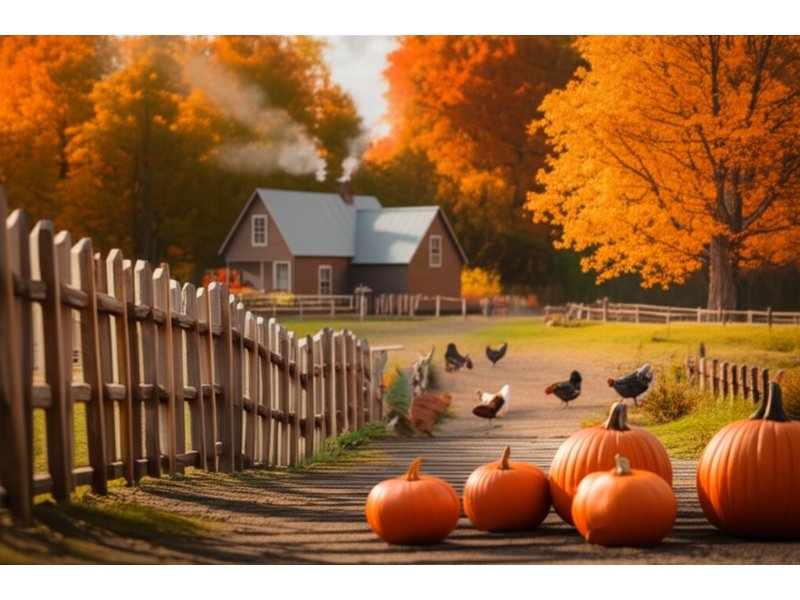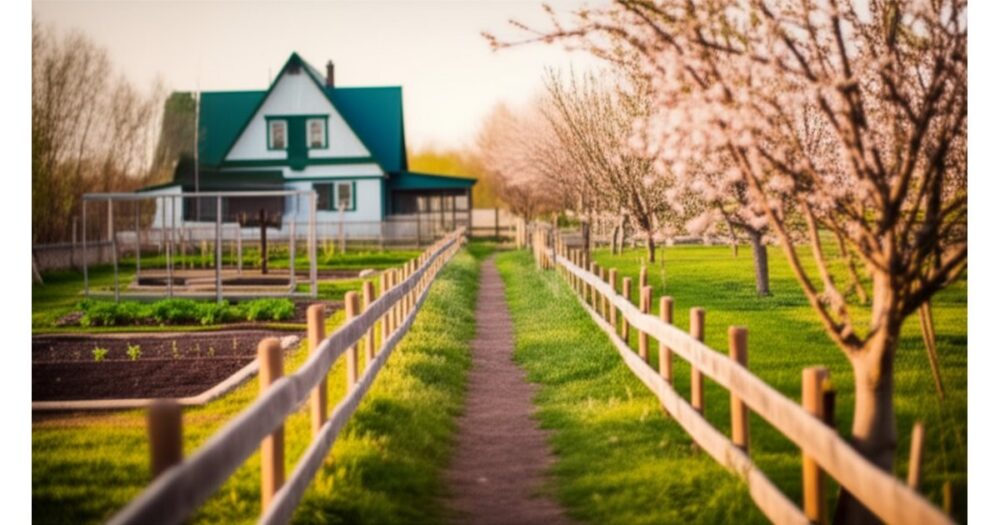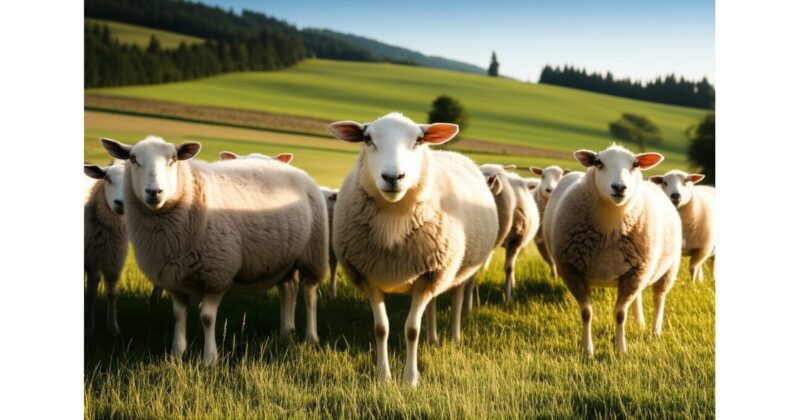Are you dreaming of a more self-sufficient lifestyle but don’t know where to start with spring homestead preparation? You’re not alone. Thousands of families are discovering the joy and security that comes from growing their own food, raising animals, and living closer to the land.
In this comprehensive guide, we’ll walk you through everything you need to know about spring homestead preparation, from the basic principles to practical step-by-step instructions. Whether you’re working with a small backyard or planning a full rural homestead, these proven strategies will help you build the sustainable lifestyle you’ve been dreaming of.
What you’ll learn in this guide:
- The fundamental principles of spring homestead preparation
- Step-by-step instructions for getting started
- Common mistakes to avoid (and how to fix them)
- Real-world examples from successful homesteaders
- Resources and tools to accelerate your progress
Optimizing Your Homestead with Spring Homestead Preparation
Spring Homestead Preparation is crucial for homestead success, as each season brings unique opportunities and challenges. By aligning your activities with natural cycles, you can maximize productivity, reduce workload, and create sustainable systems that work with nature rather than against it.
Understanding Seasonal Rhythms
Natural Cycles and Homestead Planning
- Daylight hours and solar energy availability
- Temperature patterns and frost dates
- Precipitation patterns and water availability
- Plant and animal reproductive cycles
- Soil temperature and microbial activity
Seasonal Energy Management
- High-energy seasons for intensive work
- Low-energy seasons for planning and maintenance
- Matching tasks to available daylight
- Balancing work and rest throughout the year
- Preparing for seasonal transitions
Spring: The Season of Renewal and Growth
Early Spring Tasks (6-8 weeks before last frost)
- Start seeds indoors for warm-season crops
- Prepare garden beds and add compost
- Prune fruit trees and berry bushes
- Clean and repair equipment and infrastructure
- Plan crop rotations and garden layouts
Mid-Spring Activities (2-4 weeks before last frost)
- Direct seed cool-season crops
- Transplant cold-hardy seedlings
- Begin soil preparation in vegetable gardens
- Start composting systems for the season
- Assess and repair winter damage
Late Spring Preparations (after last frost)
- Transplant warm-season crops outdoors
- Plant heat-loving vegetables and herbs
- Establish new perennial plantings
- Begin regular watering and maintenance schedules
- Implement pest monitoring programs
Summer: Peak Production and Preservation
Early Summer Focus
- Maintain consistent watering schedules
- Begin succession planting for continuous harvests
- Start first preservation activities
- Monitor and manage pest populations
- Harvest early crops and herbs
Mid-Summer Intensity
- Peak harvest and preservation season
- Implement water conservation strategies
- Manage heat stress in plants and animals
- Process and store abundant harvests
- Plan and plant fall crops
Late Summer Preparation
- Continue preservation activities
- Begin fall garden preparation
- Collect and save seeds from best plants
- Assess season’s successes and challenges
- Plan improvements for next year
Fall: Harvest, Storage, and Preparation
Early Fall Activities
- Harvest main-season crops
- Begin winter storage preparations
- Plant cover crops and green manures
- Preserve peak-season abundance
- Prepare animals for winter
Mid-Fall Tasks
- Complete major harvest activities
- Winterize infrastructure and equipment
- Plant garlic and other fall crops
- Build and maintain compost systems
- Gather materials for winter projects
Late Fall Preparation
- Final harvest of storage crops
- Protect tender plants from frost
- Complete preservation and storage tasks
- Prepare heating systems and winter supplies
- Plan next year’s garden and improvements
Winter: Rest, Planning, and Skill Development
Early Winter Focus
- Complete final outdoor tasks
- Begin indoor seed starting preparations
- Plan next year’s crop rotations
- Order seeds and supplies for spring
- Focus on skill development and learning
Mid-Winter Activities
- Maintain preserved foods and storage areas
- Plan infrastructure improvements
- Study and research new techniques
- Prepare for spring seed starting
- Maintain equipment and tools
Late Winter Preparation
- Begin seed starting for early crops
- Finalize garden plans and orders
- Prepare beds for spring planting
- Service and repair equipment
- Plan seasonal work schedules
Seasonal Crop Planning
Cool-Season Crops
Spring Planting (4-6 weeks before last frost)
- Lettuce, spinach, and leafy greens
- Peas, fava beans, and cool-season legumes
- Radishes, turnips, and quick-growing roots
- Onions, leeks, and allium family crops
- Brassicas like cabbage, broccoli, and kale
Fall Planting (8-12 weeks before first frost)
- Same crops as spring but with different varieties
- Focus on cold-hardy and storage varieties
- Extend season with row covers and protection
- Plan for winter harvests where climate allows
- Consider greenhouse or cold frame production
Warm-Season Crops
Late Spring/Early Summer Planting
- Tomatoes, peppers, and nightshade family
- Squash, cucumbers, and vine crops
- Beans, corn, and warm-season staples
- Herbs like basil, oregano, and heat-lovers
- Heat-tolerant flowers and beneficial plants
Perennial Crop Management
Spring Care
- Prune and shape fruit trees and bushes
- Divide and transplant perennial vegetables
- Mulch and fertilize established plantings
- Assess winter damage and plan replacements
- Begin pest and disease monitoring
Summer Maintenance
- Harvest fruits and berries at peak ripeness
- Summer prune and train fruit trees
- Manage water needs during dry periods
- Control weeds and maintain mulch
- Monitor for pest and disease issues
Fall Preparation
- Final harvest of tree fruits and nuts
- Plant new perennial crops
- Prepare plants for winter dormancy
- Apply winter mulch and protection
- Plan expansion and improvements

>
Seasonal Animal Management
Spring Animal Care
- Breeding season for many species
- Increased nutrition needs for pregnant animals
- Pasture rotation and grazing management
- Health checks and vaccination schedules
- Facility cleaning and maintenance
Summer Animal Management
- Heat stress prevention and cooling
- Parasite monitoring and management
- Pasture management and rotation
- Water system maintenance and monitoring
- Fly and pest control measures
Fall Animal Preparation
- Breeding decisions for spring births
- Body condition assessment and adjustment
- Winter feed procurement and storage
- Facility winterization and repairs
- Health assessments and treatments
Winter Animal Care
- Increased feed and energy requirements
- Shelter and protection from weather
- Water system freeze protection
- Reduced daylight and breeding impacts
- Emergency preparedness and planning

>
Seasonal Preservation Strategies
Spring Preservation
- Early greens and herbs for drying
- Asparagus and early vegetables for freezing
- Wild edibles and foraged foods
- Maple syrup and tree saps
- Early berry preserves and jams
Summer Preservation Peak
- Canning tomatoes, fruits, and vegetables
- Dehydrating herbs, fruits, and vegetables
- Freezing peak-season produce
- Fermentation projects and cultures
- Smoking and curing meats
Fall Preservation Focus
- Root vegetable storage and cellaring
- Apple processing and storage
- Final canning and preservation push
- Seed saving and storage
- Meat processing and preservation
Winter Preservation Activities
- Monitoring stored foods
- Using preserved foods in meal planning
- Planning next year’s preservation needs
- Maintaining equipment and supplies
- Learning new preservation techniques

>
Economic Seasonal Planning
Seasonal Income Opportunities
- Spring: Plant sales, consulting, workshops
- Summer: Fresh produce sales, agritourism
- Fall: Preserved foods, storage crops, crafts
- Winter: Planning services, skill teaching
Seasonal Expense Management
- Spring: Seeds, plants, equipment purchases
- Summer: Water, pest control, harvest supplies
- Fall: Preservation supplies, storage materials
- Winter: Heating, feed, maintenance costs
Cash Flow Planning
- Anticipate seasonal income variations
- Plan major purchases for optimal timing
- Build reserves during high-income periods
- Minimize expenses during low-income seasons
- Diversify income streams across seasons
Success with spring homestead preparation requires understanding and working with natural rhythms rather than fighting against them. By planning activities around seasonal cycles, you can reduce stress, increase productivity, and create a more sustainable and enjoyable homesteading lifestyle.
Taking Action with Spring Homestead Preparation
Mastering spring homestead preparation is a journey that requires patience, practice, and persistence. The techniques and strategies outlined in this guide provide a solid foundation for success, but remember that every homestead is unique. Adapt these methods to your specific situation, climate, and goals.
Start with one or two techniques that resonate most with you, and gradually expand your skills as you gain confidence and experience. Don’t be discouraged by initial setbacks—they’re part of the learning process and often lead to the most valuable insights.
The homesteading community is incredibly supportive and generous with knowledge sharing. Connect with local homesteaders, join online forums, and don’t hesitate to ask questions. Your success contributes to the broader movement toward sustainable, self-sufficient living.
—
Related Articles:
- [Regenerative Homesteading Practices Guide](https://homesteadingalliance.com/regenerative-homesteading-practices-guide/)
- [Homesteading Guide To Silkie Breeds Chickens](https://homesteadingalliance.com/homesteading-guide-to-silkie-breeds-chickens/)
- [Starting A Homestead Checklist For Success](https://homesteadingalliance.com/starting-a-homestead-checklist-for-success/)
- [Microgreens Growing Tips For Success](https://homesteadingalliance.com/microgreens-growing-tips-for-success/)
- [Homesteading Skills For Beginners Made Easy](https://homesteadingalliance.com/homesteading-skills-for-beginners-made-easy/)
This post may contain affiliate links. As an Amazon Associate, we earn from qualifying purchases at no extra cost to you. Read our full disclosure policy.





